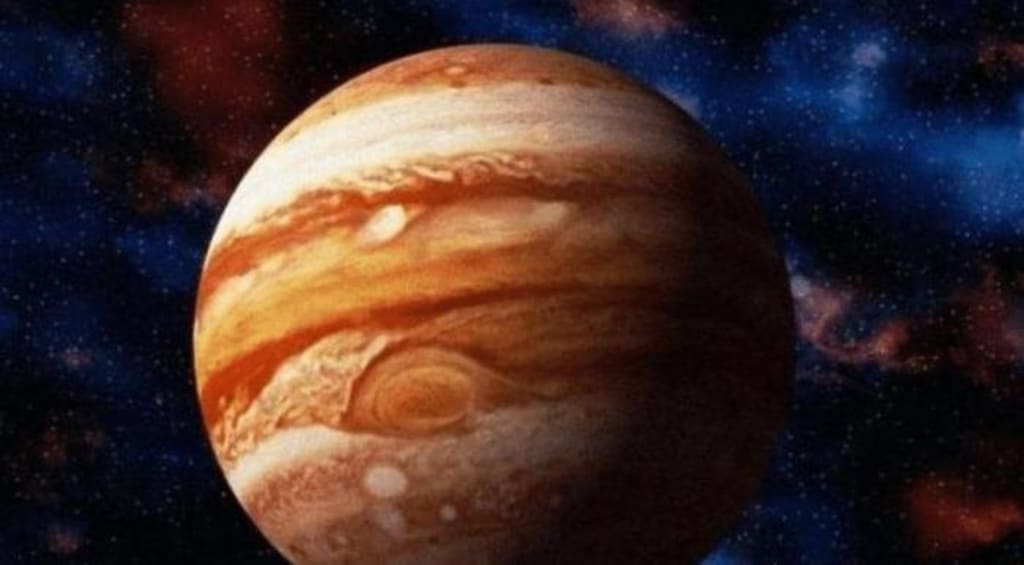Jupiter is a gaseous planet, so can we pass through Jupiter as we pass through the air?
Can we pass through Jupiter as we pass through the air?

If we take a spacecraft to Jupiter, we will find that we can't find a place to land at all, so many friends have thought of a question, isn't Jupiter a big balloon? It’s not enough to drive this spaceship directly through it. You must know that the air on the earth can’t be seen or touched. We can come and go freely in the air and do all kinds of free activities. And Jupiter is a gas planet, that's true, but it's impossible for us to pass through Jupiter as we pass through air, why would I say that?
We can take a thrilling trip into the interior of Jupiter and see what kind of place Jupiter is inside. Let's take a look at Jupiter's position in the solar planetary system. It is the largest planet in the solar planetary system. How big is Jupiter? In the solar system, Jupiter's mass is second only to the sun, and its mass is 1/1,000th of that of the sun. Although Jupiter's mass is not comparable to that of the sun, its mass is 2.5 times that of the sum of the masses of the other seven planets in the solar planetary system. Jupiter's average diameter is 139,822 kilometers, its size is 1,316 times that of our earth, and its mass It is equivalent to three hundred and eighteen times the size of our earth. If we put the earth and Jupiter together, it is probably like this.
When we come to Jupiter in a spaceship, we will be deeply shocked by it, maybe because of fear, maybe because of excitement, in the sky above Jupiter's atmosphere, we will see the colorful stripes in the east and west directions on Jupiter become The fast-moving storms whizzed past us, especially the Great Red Spot Storm, which has a diameter of tens of thousands of kilometers and can easily fit an Earth. It has been raging on Jupiter for at least three hundred years, and Huge, it's like one of Jupiter's giant eyes staring at us.
Are we flying into Jupiter now, or are we rushing to escape Jupiter? It's too late to leave now. Now we're going to pass through Jupiter's atmosphere. Jupiter's atmosphere is the thickest in the solar system. The bottom of the earth's atmosphere is the land and ocean on the surface. Jupiter itself has no solid surface. How can its atmosphere have Bottom ah? Therefore, scientists who study Jupiter usually consider the place where the atmospheric pressure is 10 times that of the Earth's surface as the bottom of Jupiter's atmosphere. Even so, Jupiter's atmosphere is 5,000 kilometers thick, and passing through Jupiter's atmosphere will face huge risks, because the high temperature and pressure generated by the friction between the spacecraft and Jupiter's atmosphere may cause the spacecraft to collapse.
The Galileo Jupiter probe once released a sub-probe into Jupiter's atmosphere. In order to safely enter Jupiter's atmosphere, the probe's protective heat shield accounts for half of the probe's total weight. That's it, the probe entered Jupiter's atmosphere at a speed of 48km per second. It endured an acceleration of 400G and a pressure equivalent to 14 Earth atmospheres. The friction between the surface and Jupiter's atmosphere produced a temperature as high as 780 degrees Celsius.
The fully armed Jupiter atmosphere probe persisted in the Jupiter atmosphere for an hour, and was eventually overwhelmed by the Jupiter atmosphere. Our spacecraft, after entering the Jupiter atmosphere, will face the same problem. When this spacecraft goes deep into Jupiter's interior, it will face higher and higher pressures. As the pressure of Jupiter's atmosphere gradually increases, the density becomes larger and larger, and finally the hydrogen on Jupiter becomes liquid. If our spacecraft is not crushed at this time, it will plunge into the liquid hydrogen inside Jupiter. In the ocean, a spacecraft has become a submarine. If the spacecraft continues to move towards the inner core of Jupiter, it will find that it has reached the bottom of the liquid hydrogen ocean, which is the core of Jupiter.
At present, scientists do not know what the characteristics of Jupiter's core are. It is generally believed that Jupiter has a rocky core. The mass of Jupiter's core is equivalent to 15 to 40 Earths, and its diameter is equivalent to two Earths. The core of Jupiter is a rather terrifying place, here The temperature can be as high as 20,000 to 30,000 degrees Celsius, and the pressure can reach 100 million to 300 million Earth's atmosphere. If a human spacecraft comes to the core of Jupiter, it is destined to be unable to get out.
summary
Judging from this thrilling tour of Jupiter's interior, it's just an unrealistic fantasy that we're going through Jupiter's atmosphere like air.
About the Creator
sayre laylah
Tired of monotonous climbing moves, but every step is close to the top
Enjoyed the story? Support the Creator.
Subscribe for free to receive all their stories in your feed. You could also pledge your support or give them a one-off tip, letting them know you appreciate their work.






Comments
There are no comments for this story
Be the first to respond and start the conversation.